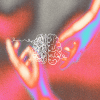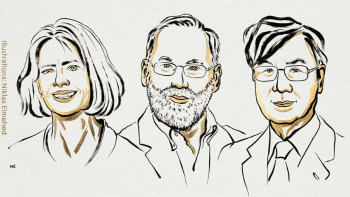Dealing with digital clutter

The virtual world hums with a ceaseless barrage of pings and pop-ups – where drowning in a sea of emails, stacked data files, and multiple tabs is an all-too-familiar scenario. An unrelenting cascade of content is thrown our way, at all times. While we are being swept away in a whirlpool of distractions, this endless stream of digital noise often creates a sense of mental exhaustion due to digital clutter. Much like its physical counterpart, this phenomenon refers to the state of disorganisation of data within our virtual spaces.
What makes it tempting to hoard information, however, is the convenience of cloud storage and vast device capacity. Users are often under the illusion that every file, picture, or link might prove useful in the future. For many, digital clutter sneaks in unnoticed. It begins with storing several unused screenshots on the phone, leaving a few browser tabs open 'for later', or accumulating countless saved articles and documents that never get read – eventually compounding into an overwhelming cluster.
One primary reason why digital clutter persists is because we often fail to accurately gauge out precisely how useful some data is to us. A study published in the Journal of Obsessive-Compulsive and Related Disorders reveals that individuals who tend to stack information often overestimate the value of their digital possessions. This can lead to significant distress over the thought of deleting digital items. Such findings underscore the profound impact of our relationship with digital possessions and the impact it has on our mental well-being, making it imperative to address the rising phenomenon.
The cluttered digital landscape can mimic the effects of physical chaos, with similar outcomes on emotional health. Research has drawn parallels between digital overload and mental fatigue, highlighting how multitasking and constant interruptions diminish cognitive performance. Switching between tasks consumes more time than anticipated, leaving the brain scattered and depleted. Over time, this pattern cultivates burnout, making even the simplest of responsibilities feel overwhelming.
Virtual clutter also significantly impacts workflow. When our digital spaces are unorganised, it becomes increasingly difficult to locate specific information, leading to wasted time and mounting frustration. Besides, the constant influx of information can overwhelm our cognitive abilities, making it difficult to focus and prioritise tasks. Often, productivity turns into a myth in the digital expanse.
In addition, digital clutter may pose security hazards. As we accumulate more and more digital data, we increase the potential for data breaches and cyberattacks. This is because the more files a user has on their device, or on the servers or cloud system, the greater the odds that a perpetrator can access them. However, it is possible to reduce the risk of sensitive information being compromised by regularly decluttering our digital spaces.
Adopting a habit of digital organisation can implement several benefits, extending beyond technical performance. Firstly, it promotes a sense of control and reduces the mental fatigue that accompanies digital chaos. By categorising files, emails, and other digital assets systematically, users can achieve a clearer state of mind, akin to how a tidy workspace fosters productivity and creativity.
Additionally, regular digital maintenance encourages mindful consumption of information. When we consciously sort through our digital spaces, we become more selective about what we save or download, reducing the tendency to hoard unnecessary data. This practice cultivates an approach to technology where the quality of content takes precedence over quantity, and distractions are effectively minimised.
Another key advantage lies in sustainability. Data storage, though seemingly intangible, has a tangible environmental impact. The energy consumed by data centres and cloud storage contributes significantly to carbon emissions. By deleting unused data and reducing storage requirements, we indirectly lower our digital carbon footprint, contributing to a greener planet.
Decluttering your digital space involves a systematic approach. It is essential to identify areas that demand attention and create a manageable roadmap. This could include purging obsolete files, deleting pictures, or unsubscribing from unwanted newsletters. You may consider uninstalling unnecessary apps and unfollowing creators on social media whose content no longer resonates or adds value to your life in order to streamline a minimal digital experience. With the help of regular maintenance, it is possible to prevent further digital clutter.
By taking proactive steps to declutter our digital spaces, we can enhance our productivity, embrace mindfulness, and protect our privacy online. Adopting a minimalist approach to digital consumption and regularly maintaining our virtual environment leads to a more focused, efficient, and sustainable lifestyle.
References:
1. Journal of Obsessive-Compulsive and Related Disorders (April, 2019). Pinning our possessions: Associations between digital hoarding and symptoms of hoarding disorder.
2. George, A. Shaji. (2024). Digital Hoarding: The Rising Environmental and Personal Costs of Information Overload.
Titir is part-time a student and full-time a no brainer. Find her at [email protected]

 For all latest news, follow The Daily Star's Google News channel.
For all latest news, follow The Daily Star's Google News channel. 








Comments